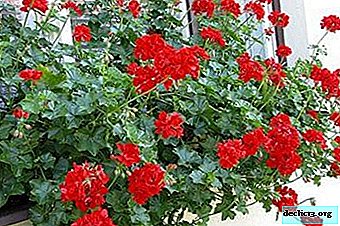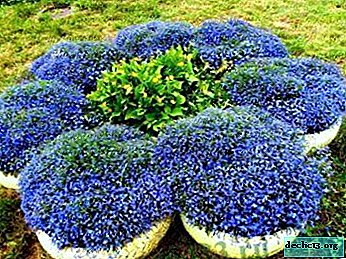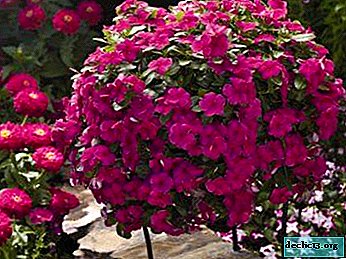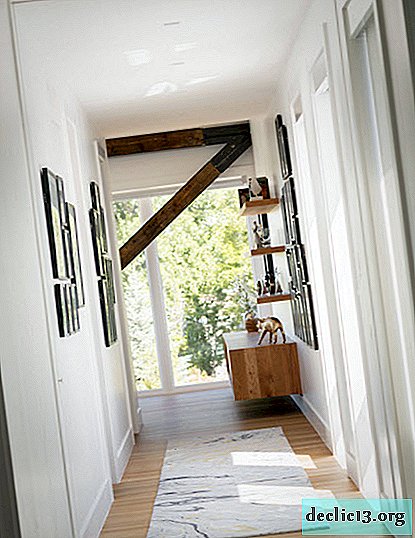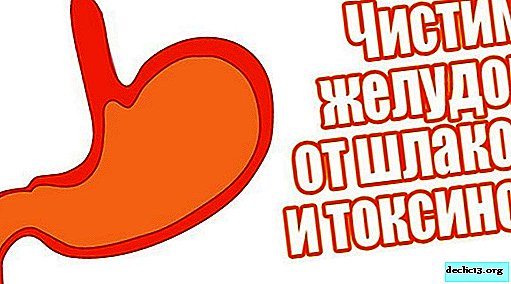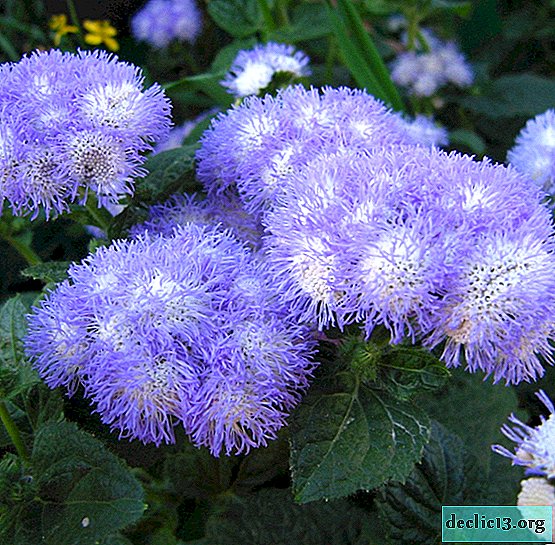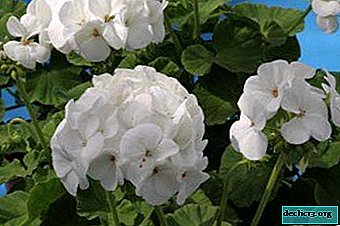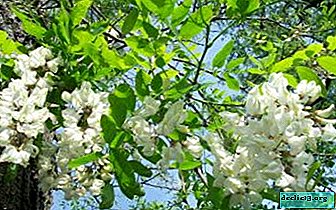How to shape a room grenade, and what types of pruning are there?
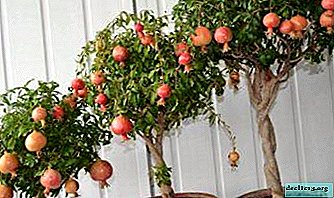
Well-groomed pomegranate is a welcome exotic culture in the home of every grower. In the decorative flowering and fruiting, this plant has no equal, and pomegranate is easy to prune, so you can form a delightful compact bush.
This article will tell you what types of pomegranate require pruning, is it necessary to carry out the procedure, what types of pruning are there, how to care for a pomegranate during pruning and after, and what to do if pruning has worsened the condition of the plant.
Do all types of pomegranate require pruning and crown formation?
For home growing suitable ordinary dwarf pomegranate, as well as Socotran. Both species need a pruning, with which you can give the crown of a pomegranate tree the shape of a ball or a panicle, form a bonsai or a large spreading bush.
Is crop trimming mandatory?
In nature, pomegranates feel good without pruning, but for a home representative of the culture this procedure can be achieved:
- stimulating the formation of side shoots;
- the formation of powerful skeletal branches;
- improving the overall shape of the plant;
- not allowing thickening;
- prevention of damage by harmful insects and diseases;
- stimulation of abundant flowering;
- increase yields and improve the taste of fruits.
Types of Procedure
All of the following types of pruning are used when growing pomegranate in different periods of vegetation.
Formative
The purpose of such pruning is to give the pomegranate crown the desired shape and ennoble the appearance of the plant.
How to spend?
 If the plant is fruit bearing, then the forming pruning is carried out after harvesting and in the spring. A signal for the need for the procedure is an uneven crown with many knocked-out shoots.
If the plant is fruit bearing, then the forming pruning is carried out after harvesting and in the spring. A signal for the need for the procedure is an uneven crown with many knocked-out shoots.
You can start shaping a pomegranate at the stage of a slightly stronger seedling. When the shoot reaches fifteen centimeters in height, the top is pinched off, after which lateral shoots begin to grow from the axils of the leaves.
When the newly formed shoots reach fifteen centimeters in length, they also pinch off the crown. Due to the fact that indoor pomegranate grows with stems pointing up, it is very difficult to make them grow to the sides. The following method can help: tie each stalk in the middle with a thread to a wire, which is pulled around the bottom of the pot. Pull the threads so that the stems are in a horizontal position.
Such manipulation can only be done with very young shoots due to their flexibility. Applying this method to woody branches can lead to injury.As the pomegranate grows, it pulls the leaves to the top and you get a pretty bush. Do not allow intense vertical growth. The tops must also be nipped off. Grenade fixed in this position very intensively builds up side shoots. The threads can be removed when the tied branches are numb and locked in the desired position.
Buds and fruits are formed on actively developing dangling annual shoots, it is important not to shorten them, otherwise budding will not occur.
If the task is to make the tree interesting both in the shape of the trunk and the crown, then it is recommended to form it as follows:
- Of the three strongest seedlings in the pot, a pigtail is braided directly in the pot.
- The trunk will be fixed in such a beautiful shape after half a year, during this time the plant will form lateral shoots and all these branches should be removed:
- first cut the lowest branches, making a cut into a ring near the trunk;
- trim with a sharp hemp blade;
- skeletal branches at the top leave for crown formation.
We suggest you watch a video on the formation of a grenade:
Making bonsai
 This is a time consuming process, but the decorative effect of the result deserves the time spent.
This is a time consuming process, but the decorative effect of the result deserves the time spent.
For the formation of a bonsai, a pomegranate is suitable, which has already managed to grow, and whose strongest stem in thickness reaches at least 2.5 cm. Pruning is carried out according to the following scheme:
- all unnecessary branches are deleted;
- the trunk is cut at a level of 20-25 cm;
- bend to the desired shape and secure with wire;
- from the remaining branches with young shoots form a crown and fix the fishing line;
- as regrowth, the crown is trimmed.
Sanitary
Conducted to cleanse old, weakened, dried branches and extra shoots, thickening the bush.
How is it performed?
The procedure can be performed in the summer, during the period of active vegetation.. Re-pruning can be done after flowering, if there are no fruits on the tree. Weak branches are removed and the inner space of the crown is thinned out. It is also important to trim fattening, that is, giving no flowers and fruits useless branches. They take vitality from the plant, harming its health and development.
Important! Sap flow on a young tree begins quite late. A branch may look completely dry and lifeless, and after a while, actively begin to grow foliage. Before you start pruning, you need to observe the plant so as not to damage it.Anti-aging
Such pruning stimulates the growth of new branches, which saves if the bush begins to age, stops growing and does not bear fruit.
Rules for
The procedure must be carried out after the pomegranate comes out of hibernation. Branching is stimulated by cutting a young shoot over an outward looking kidney, leaving no more than five internodes. Strongly prune the plant should not, it can die. You must leave at least six strong skeletal branches. Every five years, skeletal stems need to be replaced with young, strong shoots.
Pomegranate has extremely fragile branches. Carrying out all types of pruning, it is necessary to carefully bend around those shoots that are not planned to be adjusted.
Care during and after the procedure
 Pomegranate tolerates pruning very gratefully and does not require special conditions in the process of its implementation. The main condition for the comfort of the pomegranate is good illumination of the place where the tree is located. For these purposes, window sills on the southern, western and eastern sides of the house are suitable. In winter, the plant must be illuminated with phytolamps.
Pomegranate tolerates pruning very gratefully and does not require special conditions in the process of its implementation. The main condition for the comfort of the pomegranate is good illumination of the place where the tree is located. For these purposes, window sills on the southern, western and eastern sides of the house are suitable. In winter, the plant must be illuminated with phytolamps.
The temperature for the successful growth of pomegranate should always be maintained at a level not lower than +20 degrees Celsius. But excessive heat or stuffiness can lead to loss of leaves. In summer, you can put a pomegranate tree on a balcony or in the garden, the main thing is to prevent direct sunlight and spray it - pomegranate prefers high humidity.
The soil in the pot should be watered as it dries. If the plant has fruits, in no case should overflows be allowed, this will lead to their cracking. Top dressing should be done twice a month. Before budding, add nitrogen, and during flowering - phosphorus. In autumn, the plant gratefully accepts fertilizers with potassium.
The material remaining after conducting the forming pruning, you can carry out the reproduction of pomegranate. To do this, you need to choose well-formed, semi-lignified shoots, about 15 centimeters long, so that they have at least four buds.
What if the plant got worse?
The causes of pomegranate discomfort after pruning may be several:
- Perhaps, after the autumn pruning, a cool wintering was not organized for the tree. To restore the plant, it is only necessary to increase the temperature of maintenance starting in February, establishing regular watering and starting to fertilize.
- If, after pruning, the bush begins to fade, you can spray it with EPIN once a week.
- If after autumn pruning, pomegranates began to drop leaves - this is the norm. The plant belongs to deciduous and this state does not mean that the plant is uncomfortable.
- If during the pruning the plant was weakened and excessive watering was carried out, pomegranate may become infected with powdery mildew. The fungal disease spreads very quickly, leaving a whitish coating on the leaves. At the initial stage of the development of the disease, reducing irrigation and treating the tree with ash or fungicidal preparations will help.
- Bacteria that can develop their livelihoods on a plant that was not trimmed correctly can cause branch cancer. Symptoms of the disease - drying branches and perishable bark. A plant can be treated with copper-containing preparations.
Timely pruning helps to ensure the aesthetic needs of the pomegranate owner, enable the tree to grow painlessly, and also stimulates active growth in order to successfully form buds and further fruiting.


